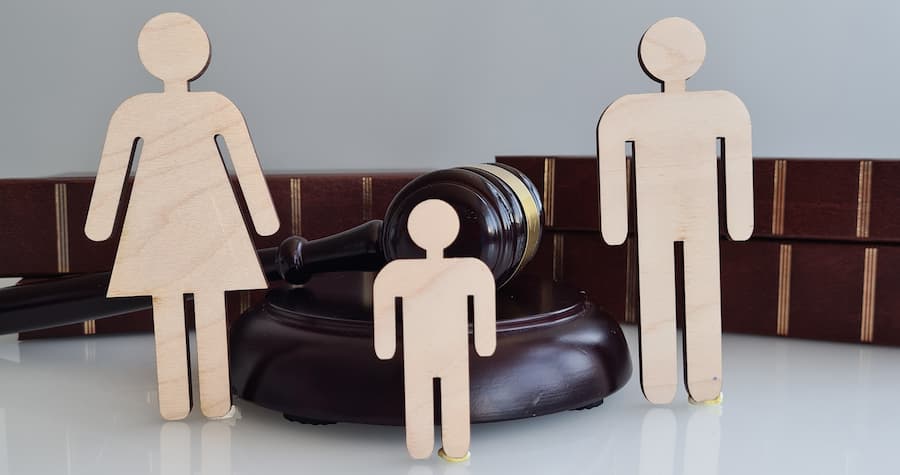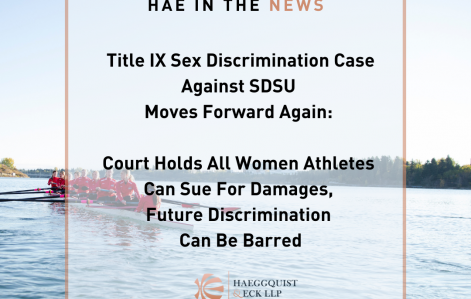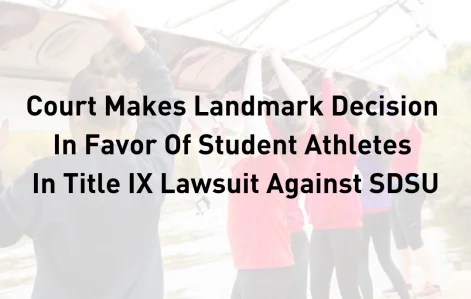California employees have many federal job protections and additional protections under California labor statutes. One important state employment law is the California Family Rights Act (CFRA). The state legislature passed the California Family Rights Act in 1993, modeling it after the federal Family Medical Leave Act.
These laws generally give employees the right to take paid or unpaid leave for family and health reasons. If more than one law covers a California employee, they are entitled to use rights outlined in the most protective law.
In addition to CRFA, California employers must also comply with the federal Family and Medical Leave Act (FMLA). This federal law does not preempt the CFRA. FMLA provides eligible employees up to 12 weeks of unpaid leave every 12 months (52 weeks), with the right to reinstatement, under certain conditions. For more information, reach out to a family rights act lawyer.
California Employee Rights Under CFRA

California’s Family Rights Act is highly similar to FMLA but on a state level. However, the CFRA is often more protective as it applies to smaller employers and covers more family members than FMLA.
CFRA mandates that employers with at least five employees provide eligible ones with up to 12 weeks of unpaid, job-protected leave during a 12-month period for some qualifying reasons, including:
- The employee’s own serious health condition (excluding pregnancy- or childbirth-related disability))
- The employee needs to care for a family member such as a child, spouse (including a registered domestic partner), parent, grandparent, grandchildren, or sibling with a serious health condition
- The employee’s desire to take time to bond with a new child within 12 months of their birth, or after an adoption, or foster care placement of a child under the age of 18
- A qualifying exigency military leave, for such things as military events and related activities, short notice deployment, and spending time with a covered military member on short-term leave
For the purposes of family leave, a serious health condition refers to an illness, injury, impairment, or physical or mental condition necessitating:
- At-home care or in-patient care within a hospital, hospice, or residential medical care facility
Or
- Continuing treatment by a doctor or other qualified health care practitioner
To qualify for CFRA leave, employees must have been employed for at least 12 consecutive months and have a minimum of 1,250 hours of service over those previous 12 months.
California Employee Rights Under FMLA
California employers must comply with the FMLA if they have 50 employees or more for a minimum of 20 weeks in the current or previous year. As with the CFRA, leave under the FMLA is job-protected, meaning an employer must reinstate an employee’s position upon returning from FMLA leave.
FMLA is a viable option for employees who have:
- Been employed at their company for a minimum of one year
- Worked at least 1,250 hours over the previous year
- Worked at a location with at least 50 employees within a 75-mile radius
Who Can Take FMLA Leave?
FMLA is for employees needing time away from work to:
- Bond with a new child under the age of 18 years
- Recover or recuperate from a serious health condition
- Take of a family member such as a spouse, child, or parent with a serious health condition
- Manage qualifying exigencies resulting from a family member’s military service, or take care of a family member who suffered a serious injury while on active duty in the military
How Much Time Does the FMLA Provide?
Employees may have as many as 12 weeks of leave in a 12-month period for a qualifying reason. In addition, as long as the employee continues to meet the eligibility requirements explained above, this leave renews every 12 months. For example, an employee can take 12 weeks off to recover and bond with their child after giving birth in 2021. One year later, in 2022, they may need major surgery and can take another 12 weeks off to recover.
Employees who need military caregiver leave are allowed as many as 26 weeks of leave in one 12-month period per injury, per service member. The employee cannot take an additional leave for this purpose unless the same family member suffers injuries again or another family member suffers an injury while on active duty.
For instance, an employee takes 26 weeks of leave in 2021 to care for their military spouse who suffered an injury while on active duty. In 2022, the spouse is still recovering from their injuries; however, the employee can’t take another 26 weeks off to care for them. Alternatively, if the military spouse suffered a different injury, they can take another 26 weeks off because it was a new injury.
Employee Rights to Leave and Reinstatement
FMLA provides that an employee’s health insurance remain in place while they are on leave and that they should pay the same premium as if they were working. One thing to keep in mind is that even though FMLA leave is unpaid, employees might have to use up their accrued paid leave during an FMLA leave.
At the end of their FMLA leave, an employee has the right to reinstatement to the same or an equivalent position, with only a few minor exceptions.
Can You Use CFRA and FMLA Leave Together?
Some employees qualify for taking leave under both the CFRA and FMLA. In these cases, they usually cannot stack the leave together to receive more than 12 weeks. For instance, they can’t take 12 weeks under CRFA and then 12 weeks under FMLA. But, if they qualify, the worker can theoretically take up to 24 weeks or leave per 12-month stretch under both, just not at the same time.
Suppose an employee took 12 weeks off through FMLA coverage to help their child recover from a significant illness. Then the employee’s grandparent fell and broke their hip within the same year. In that case, the employee can take leave under CFRA to care for the grandparent after taking 12 weeks off through FMLA for their child.
What Are the Primary Differences Between CFRA and FMLA?
Comparatively, the California Family Rights Act and the Family and Medical Leave Act have three primary differences. First, the FMLA only applies to businesses with 50 or more employees, while the CFRA applies to companies with at least five employees.
Next, under FMLA standards, pregnancy is considered a “serious health concern.” However, under the CFRA, pregnancy is not. Alternatively, an eligible pregnant employee in California is entitled to as many as four months of pregnancy disability leave (PDL). However, a pregnant employee that uses leave under California’s PDL can also have up to 12 weeks of baby bonding leave under the CFRA.
Finally, under both FMLA and CFRA, an employee can take up to 26 weeks of leave to care for a spouse, child, or parent who becomes ill or gets injured in the line of duty while on active military duty. However, with FMLA, an employee can also take this type of leave to care for an injured military member who is the employee’s next of kin.
Can Employers Punish Their Employees for Taking Time Off?
It’s illegal for an employer to punish or retaliate against a worker for taking leave under the CFRA or FMLA.
Even still, employers sometimes punish employees for exercising these rights by:
- Harassing them
- Refusing to promote them
- Discriminating against them
- Wrongfully terminating their employment
Depending on the specific details of the situation, if an eligible employee suffers adverse action for properly exercising their rights and taking leave, they might file a civil lawsuit against their employer for damages.
Does California Offer Paid Family Leave?
California has a Paid Family Leave (PFL) program that provides benefits to employees taking off for any CFRA-qualifying reasons. California was the first state in the nation to have such a program when it came into law in 2002. PFL is administered through the State Disability Insurance (SDI) program, providing up to eight weeks of benefits for covered employees in the state. If you have earned $300 from which SDI deductions were withheld during the past 12 months, you are eligible for PFL.
Benefits Provided Under California’s PFL
Those who qualify for California’s PFL can receive about 60 to 70 percent of their wages for as many as eight weeks, with a maximum weekly benefit of $1,540 in 2022. Benefits equal about 60 percent of an employee’s salary for California’s higher-income earners and approximately 70 percent for lower-income earners. California’s Employment Development Department website provides a benefits calculator and a step-by-step guide for how to file a claim.
PFL claimants can’t submit a claim prior to their first day of leave but must do so within the first 41 days after their leave begins. Once submitted, claims can take about two weeks to process. Claimants can choose if they want to receive their benefits all at once or split over 12 months. Employers may also allow employees to use vacation time, sick leave, paid time off, or other types of employer-provided leave to supplement their family leave benefits, which may allow them to receive up to 100 percent of their regular pay.
Other Types of Leave and Benefits Available to Certain California Employees
California Small Necessities Law
Under California’s Small Necessities Law, companies that employ at least 25 people are legally required to give workers as many as 40 hours of unpaid leave in any 12-month period to participate in activities or events at their child’s daycare or school. However, their time off can’t exceed eight hours in a single month.
California Military Family Leave
Under California law, companies with a minimum of 25 employees must provide eligible employees up to ten days of unpaid leave while their spouse is on leave from deployment during a period of military conflict.
California Paid Temporary Disability Insurance
California has its own temporary disability insurance program, which receives funding through California employee paycheck withholding. Eligible employees who can’t work due to a temporary disability (including pregnancy) can get up to 60 percent or 70 percent of their usual paycheck, depending on their wages.
California Pregnancy Disability Leave
Employers with a minimum of five employees must provide their employees a reasonable amount of time off for disability due to:
- Pregnancy
- Childbirth
- Related conditions
However, the reasonable period doesn’t have to be more than four months. Additionally, pregnancy disability leave doesn’t count against the employee’s leave provisions under the California Family Rights Act. So, for instance, an employee might have bed rest orders for the last 12 weeks of their pregnancy by their doctor, requiring them to take a pregnancy disability leave. After the baby is born, the same eligible employee can take up to 12 weeks of FMLA or CFRA.
California Domestic Violence Leave
No matter their size, all employers are legally required to give workers unpaid leave to seek a restraining order or other judicial relief from domestic violence for themselves or their child.
In addition, companies with at least 25 employees must permit employees who are victims of domestic violence, stalking, or sexual assault to take time off to:
- Obtain medical care
- Access services from a rape crisis center or domestic violence shelter, or program
- Receive counseling
- Participate in safety planning
- Relocate to somewhere safe
In addition, the law prohibits California employers from discharging, discriminating, or retaliating against an employee who needs time off to take any of these actions.
Do You Have Questions About Your Rights as a California Employee? Contact an Experienced Labor and Employment Attorney Today

Federal and California laws are in place to protect many employees and provide them with certain rights. Unfortunately, some employers disagree with these rights because it hurts them financially or otherwise. As a result, they may try to deny their employee’s rights, retaliate against them, or punish them. If you face such a situation or don’t know your rights under FMLA or the CFRA, call an experienced employment law attorney today.





